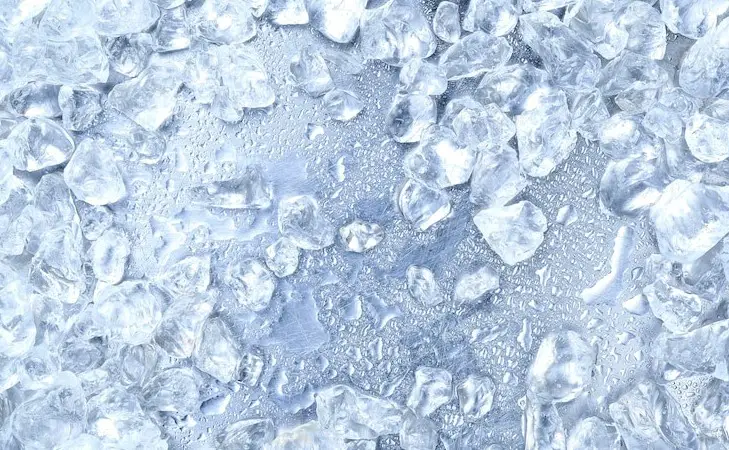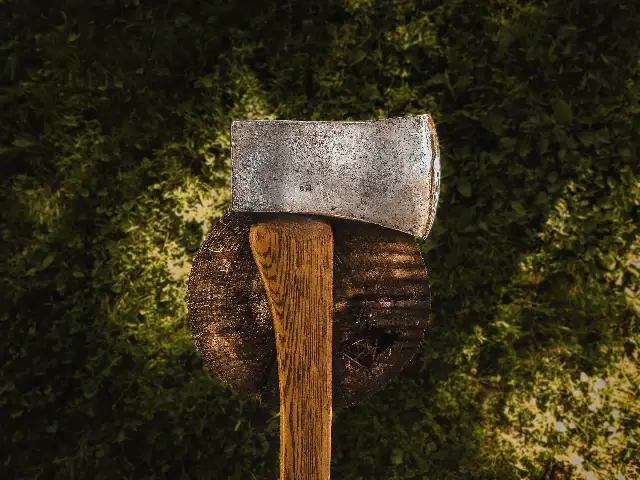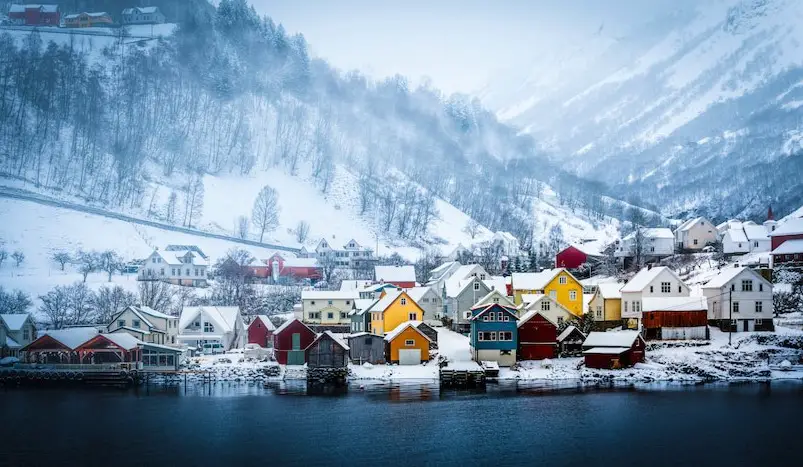Last Updated on July 12, 2023 By Emma W. Thomas
Rubbing alcohol can be used to melt ice from gutters, but it may not be the most effective or practical solution. Rubbing alcohol typically contains isopropyl alcohol, which has a freezing point of around -128.2°F (-89°C). While it has a lower freezing point than water, it may not be sufficient to quickly and effectively melt ice in gutters, especially during colder temperatures.
How does rubbing alcohol melt ice?

Rubbing alcohol, also known as isopropyl alcohol, is commonly used as a household cleaning agent and has various properties that make it effective in melting ice. Here are some key points about how rubbing alcohol melts ice:
- Melting Point Lowering: Rubbing alcohol has a lower freezing point than water. The freezing point of isopropyl alcohol is around -128.2 degrees Celsius (-198.8 degrees Fahrenheit), whereas the freezing point of water is 0 degrees Celsius (32 degrees Fahrenheit). When rubbing alcohol is mixed with water, it lowers the freezing point of the mixture, causing the ice to melt.
- Conductivity and Heat Transfer: Rubbing alcohol is a good conductor of heat. When applied to ice, the alcohol absorbs heat from the surrounding environment and transfers it to the ice. This heat transfer process increases the temperature of the ice, causing it to melt.
- Dissolving Properties: Rubbing alcohol has the ability to dissolve certain substances, including ice. When applied to ice, the alcohol molecules penetrate the surface and break down the ice structure. This accelerates the melting process.
- Evaporative Cooling: Rubbing alcohol evaporates quickly, which creates a cooling effect. When applied to ice, the alcohol rapidly evaporates, extracting heat energy from the ice. This reduces the temperature of the ice, further facilitating the melting process.
It is important to note that while rubbing alcohol can be effective in melting ice, it should be used with caution and in moderation. Excessive use of rubbing alcohol may result in damage to surfaces, so it is advisable to follow the recommended application guidelines and safety precautions.
How do you apply rubbing alcohol to your gutters?
You need to mix rubbing alcohol with a few other liquids to melt the ice dams. The items you need include:
- Warm water
- Dish soap
- Rubbing alcohol
Take half a gallon of hot water; add a few drops of dish soap, then two ounces of alcohol. Mix these three to form a solution. Now pour or spray the solution on the ice formed on your gutters or any other surface.
Using hot water only will work but not be as effective as this solution. The alcohol, hot water, and dish soap mixture lasts longer and does a better job without the need to clean the roof after the ice has melted.
Plus, making the solution is easy and less costly, thus a very economical way to melt the ice on gutters.
What causes ice dams in gutters?
Ice dams are ridges of ice water that form around the edges of a roof. They prevent water and snow from flowing off the roof or through the gutters.
When the temperatures decrease, small amounts of water collect at the edge of your roof, freeze, and form a dam. Just like the actual water dams, these small ice dams hold water back from getting in your gutters or flowing through the gutters and into the spouts. The accumulation of water in the gutters or roof edge can cause damage to your roof, house, or gutters.
When snow falls, it stays on your roof since it is not as fluid and thus doesn’t flow. When the house produces heat from appliances, body heat, and even lights, the warmth heats the roof, and small amounts of snow melt into water. This water flows down to the roof’s edges, and since the edge is colder than the other parts of the roof, the water freezes here, forming ice dams. Water that melts from the snow on your roof trickles down into the gutters and freezes there.
Other methods for melting ice dams in your gutters
In the cold seasons, you will see ice collecting near the edges of your roof and in your gutters. And, although the best way is to prevent ice from forming in your gutters when it happens, you have to get rid of the ice to avoid any problems on the roof. Ice can lead to leaks if it remains on your roof or gutter for a while.
Some of the most common ways of getting rid of ice on your roof and gutters include:
Pouring hot water on the ice dams
Hot water will increase the temperature of the ice, thus melting it. But, it poses a burn risk and might take longer to get the work done. However, if you resort to this method, all you have to do is heat some water, pour it into your gutters, and let it run through them and down the spout. The method is very cheap and easy to use on the plus side.
Raking the ice dams and snow
Roof rakes were made for melting ice on roofs and gutters. They help remove the snow and ice while you are still on the ground. The roof rakes will cost you about 40 to 50 dollars and come with a soft blade that will not damage your roof or gutter.
Buy a rake, stretch it to the roof, and move it up and done to get rid of the ice.
The stocking method
The stocking method is more of a preventive measure. This method requires a sock filled with calcium chloride. Lay it in the gutter where there is a blockage. The calcium chloride in the sock will help the ice melt faster than usual. Also, avoid using rock salt. It might be cheaper, but it is less effective, and it might kill your plants if any of it leaks onto them.
Use of an axe or ice pick
An axe or ice pick can help break up the ice dams into smaller pieces that can melt faster. It might seem like a quick and easy fix, but it can be dangerous and tiresome. You have to be on the roof for it to work. Also, you can easily damage your gutters or roof when using this method to remove ice dams.

Installation of heated cables
Heated cables will permanently solve your ice problems forever. As the name suggests, the cables are installed to heat your roof or gutter and melt the ice formed.
Add insulation on the attic floor
Insulation on the attic floor minimizes the heat to keep the attic cold. A cold attic ensures that the roof is not warm enough to melt the snow. This prevents the melted snow from flowing down to the edge of the roof and your gutters to form the ice dams.
Exhaust directed outside
The kitchen, bathroom, and dryer vents should all take the hot air outside and not retain it in the house, where it will heat your roof. Warm air formed in the house is a major cause of melting the snow on your roof. Once you contain this heat, you can manage the formation of ice dams in the gutters.
Use salt
Rock salt, table salt, magnesium & potassium chlorides, and calcium chloride are all types of salts that you can use to melt ice dams. It is common for salt used in de-icing driveways and can work on the gutters. You only need to pour the salt on the ice, and it will slowly melt with time.
However, it is not advisable to use salt in gutters. When it comes into contact with water, it can cause corrosive effects on metallic materials on your roofing. Plus, it can damage the plant if melted ice is redirected to the garden.

What are the dangers of ice dams?
The dangers that ice dams can cause on your house, roof, and gutters include:
Can tear off your gutters
Ice dams trap water behind them, causing the water to freeze and form a larger piece of ice. Ice carries some weight with it, and if not fixed, it can get too heavy for the gutters. When the gutters cannot withstand the weight, they will tear off and cause some extra damage to your roof.
Water overflow
When the water trapped by the water dams lacks a clear path to flow through, it is forced to find another way out of the gutters and roof. Your attic is the only other viable option for the water. When the water overflows into your attic, it will cause a lot of damage to your ceilings, walls, and paint. A dump attic is a suitable environment for mold and mildew to grow, affecting your house’s integrity.
Loosening of shingles
The wet conditions caused by water trapped on your roof and gutters are unsuitable for your shingles. They will get damaged and lead to another job of having them reinstalled.
Final Thoughts
Rubbing alcohol can melt ice dams in your gutters and on your roof. However, it has to be mixed with warm water and dish soap. The solution gets rid of the ice effectively. In the absence of rubbing alcohol, you can try other methods such as the use of hot water, raking the ice dams and snow, using of stocking method, use of an axe or ice pick, installing heating cables, adding insulation to the attic floor, use of salt or directing all exhaust outside.
References:
https://www.bobvila.com/articles/homemade-ice-melt/
https://www.angi.com/articles/how-can-i-thaw-frozen-gutter-or-downspout.htm
Emma is a graduate of Domestic Science or Family and Consumer Sciences (Home Economics) from the University of Wisconsin. She has 7 years of experience Working with the strategic section of BestBuy and now writing full-time for Homeeon.
From Managing the Home, Interiors, Cleaning, and Exteriors to Gardening and everything about Making A Home Liveable – is her passion and this Homeeon is the result of this.
Emma loves decorating her home with the best stuff found online. She cares about quality over anything and writes reviews about them here in Homeeon. Get in touch with her over Pinterest.
Keep reading her blogs.

